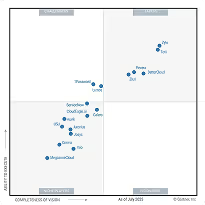HIPAA Compliance Checklist for 2025

Businesses are increasingly investing in automation technologies to streamline operations, cut costs, and improve efficiency. Among the most discussed solutions are Robotic Process Automation (RPA) and workflow automation. While both fall under the broader umbrella of process automation, they serve different purposes and address unique business challenges.
However, many organizations still struggle to understand the difference between RPA and workflow automation, often leading to confusion when choosing the right tool for their automation journey. This blog explores RPA vs workflow automation in detail, highlights the top six key differences, and provides practical insights into how they can complement each other.
TL;DR
- Workflow automation = process-level orchestration, connecting apps, teams, and approvals for seamless multi-step execution.
- RPA = task-level automation, where bots mimic human actions like data entry, form filling, or invoice processing.
- Key difference: Workflow automation handles structured, cross-team workflows; RPA excels at repetitive, rule-based tasks.
- Best results come from combining both - workflow automation for coordination, RPA for granular execution.
- CloudEagle simplifies automation with SaaS license optimization, renewal workflows, and Slack-enabled approvals.
What is Workflow Automation?
Workflow automation is the process of using software to design, execute, and streamline business workflows without manual intervention. It replaces repetitive human-driven processes with predefined logic that ensures tasks flow seamlessly from one step to another. A workflow automation system connects different tools, data, and stakeholders into a single, orchestrated process.
For example, when a new employee joins an organization, workflow automation can trigger a series of actions: sending a welcome email, assigning access credentials, setting up necessary software accounts, and notifying the IT team, all without human involvement.
Workflow IT automation focuses on end-to-end process optimization and ensures that multi-step tasks across teams and tools are completed consistently and efficiently.
Key features of workflow automation include:
- Visual workflow builders to map processes
- Integration with SaaS applications and enterprise tools
- Trigger-based task execution
- Notifications, alerts, and approval systems
- Analytics to monitor workflow performance
In short, workflow automation improves collaboration, visibility, and productivity by removing bottlenecks and ensuring compliance across complex business processes.
What is Robotic Process Automation (RPA)?
Robotic Process Automation (RPA) is the use of software bots to mimic human actions for executing repetitive, rule-based tasks. Unlike workflow automation, which focuses on orchestrating multi-step processes, RPA works at the task level. RPA bots are designed to interact with applications just like a human would by clicking, typing, copying, pasting, and extracting data.
For example, RPA can be used to extract invoice data from emails, copy it into an ERP system, and reconcile it with payment records. Similarly, RPA bots can log into a CRM, update contact details, and generate reports without requiring employee effort.
Core capabilities of RPA include:
- Rule-based automation for high-volume tasks
- Ability to work with legacy systems without APIs
- Data entry and migration across multiple applications
- Screen scraping and document processing
- 24/7 task execution with minimal errors
RPA is most effective in scenarios where tasks are repetitive, structured, and require minimal human decision-making.
RPA vs. Workflow Automation: Why the Confusion?
The confusion between workflow automation and RPA arises because both aim to streamline operations and reduce manual effort. However, their scope and methods are very different. Workflow automation focuses on connecting systems and processes into cohesive workflows, while RPA automates discrete, task-level actions.
Businesses often blur the lines because both solutions are part of the broader digital transformation strategy and can sometimes overlap in functionality.
Understanding these differences is crucial to making the right choice. Let’s now decode RPA vs workflow automation in detail.
RPA vs Workflow Automation: Decoding the Differences
RPA vs Workflow Automation: A Comparison Table
.png)
How RPA and Workflow Automation Can Work Together
Instead of choosing one over the other, many organizations are combining workflow automation and RPA to create a hybrid automation strategy. Workflow automation manages the overall process orchestration, while RPA bots handle the repetitive, task-heavy actions within those workflows.
For example, in a purchase order approval workflow, workflow automation manages routing approvals across departments, while RPA bots extract invoice details, validate vendor data, and update financial systems.
Key benefits of combining Workflow Automation and RPA:
- End-to-end efficiency: Workflow automation ensures processes move seamlessly across teams, while RPA accelerates repetitive sub-tasks.
- Scalability: Businesses can orchestrate large, complex workflows and still automate granular, task-level activities.
- Improved accuracy: RPA reduces human error in data entry and validation, while workflow automation ensures compliance and approvals are followed.
- Flexibility: Hybrid setups can adapt to both modern SaaS systems (via APIs) and legacy applications (via RPA bots).
- Cost optimization: Teams reduce manual effort at both the process and task levels, freeing employees to focus on higher-value activities.
Choosing the Right Automation for Your Business
When to Use Workflow Automation Platforms Like Kissflow
Workflow automation platforms are best when your organization needs to coordinate structured, multi-step processes. They work well if your goal is to:
- Improve collaboration across teams like HR, procurement, IT, or finance
- Ensure process visibility with centralized tracking and reporting
- Build repeatable workflows with approval chains and compliance checks
- Coordinate cross-functional tasks where multiple stakeholders are involved
When RPA Makes the Most Sense
RPA is most effective for repetitive, rule-based tasks that don’t need human judgment. It’s the right fit when you want to:
- Automate high-volume processes like data entry, claims processing, or compliance reporting
- Reduce manual effort in industries like banking, insurance, and healthcare
- Integrate with legacy systems that lack APIs by mimicking user actions at the interface level
- Bridge automation gaps without investing in costly infrastructure changes
How to Combine RPA and Workflow Automation for Best Results
The strongest automation strategies blend workflow automation with RPA. A hybrid model allows organizations to:
- Use workflow automation for managing approvals, escalations, and cross-team orchestration
- Deploy RPA bots for repetitive tasks such as data extraction, validation, and system updates
- Minimize manual intervention by handling both process-level and task-level automation
- Reduce errors and accelerate overall process completion, improving efficiency and compliance
How CloudEagle Simplifies Workflow Automation
CloudEagle.ai is a leading SaaS management and procurement platform that takes workflow automation to the next level. By offering built-in automation capabilities, CloudEagle helps organizations optimize SaaS operations, reduce costs, and improve compliance without manual effort.
CloudEagle goes beyond SaaS management by streamlining complex business workflows. Its automation features ensure that processes like vendor requests, procurement, and renewals are faster, error-free, and fully transparent.
Automate Onboarding and Offboarding Across SaaS Apps
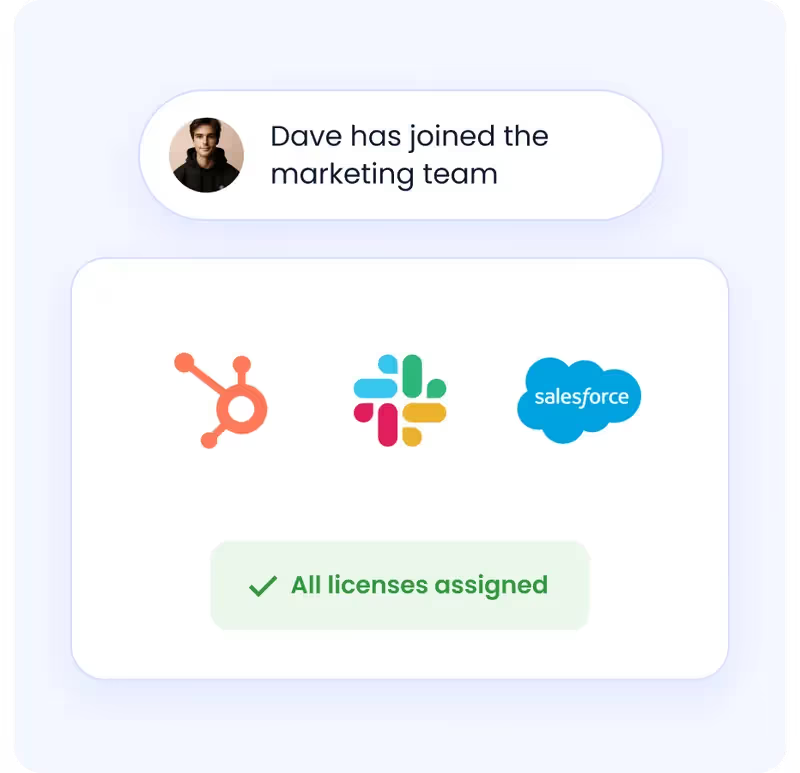
Employee onboarding and offboarding are complex, multi-step processes that require coordination between HR, IT, and security teams. With CloudEagle’s workflow automation, businesses can automatically provision or revoke access across SaaS apps, ensuring smooth employee experiences and reducing security risks.
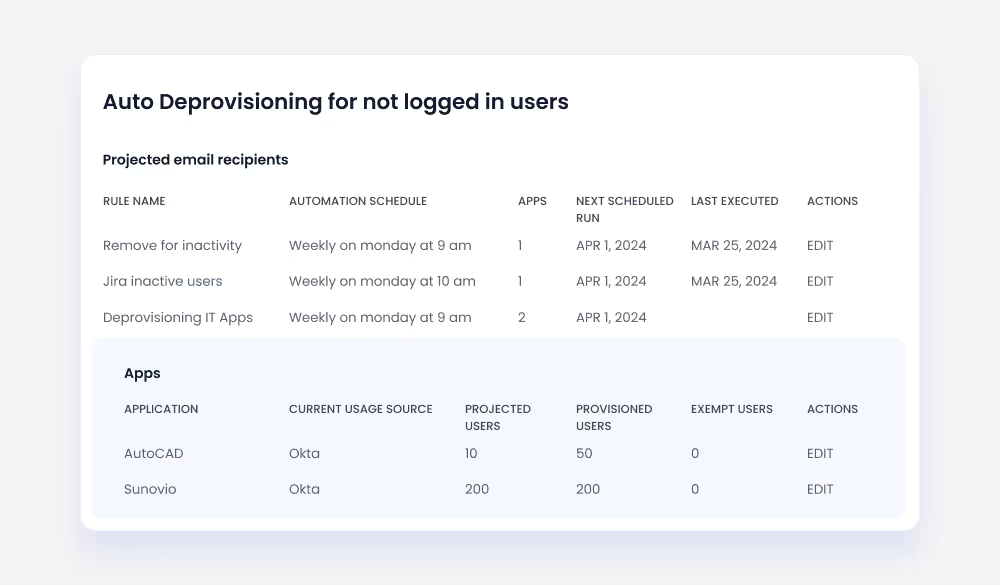
License Management and Optimization with Automation
CloudEagle automates SaaS license tracking, allocation, and reclamation. By analyzing usage patterns, it helps businesses identify underutilized licenses and reassign them to active users, reducing software waste and saving costs.
Access Reviews and Compliance Workflows Made Easy
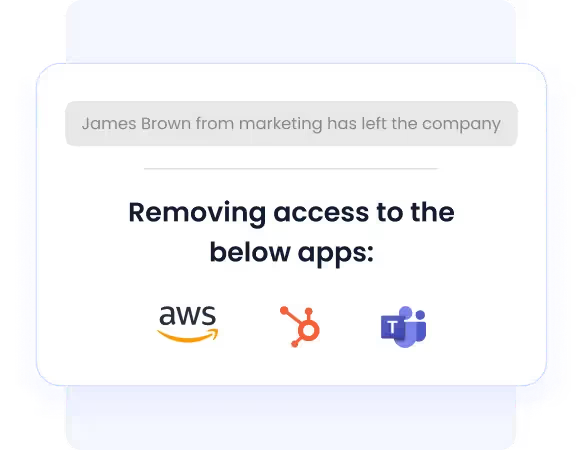
Compliance requirements such as access reviews can be time-consuming. CloudEagle simplifies this by automating review workflows, ensuring that managers can quickly approve or revoke access based on compliance policies. This reduces the risk of privilege creep and audit failures.
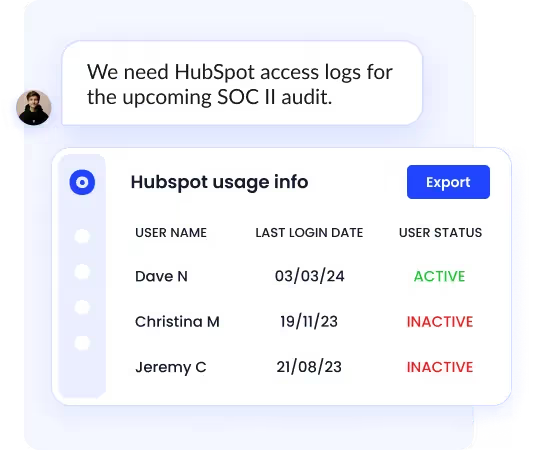
Workflow Customization with Slack-Enabled Approvals
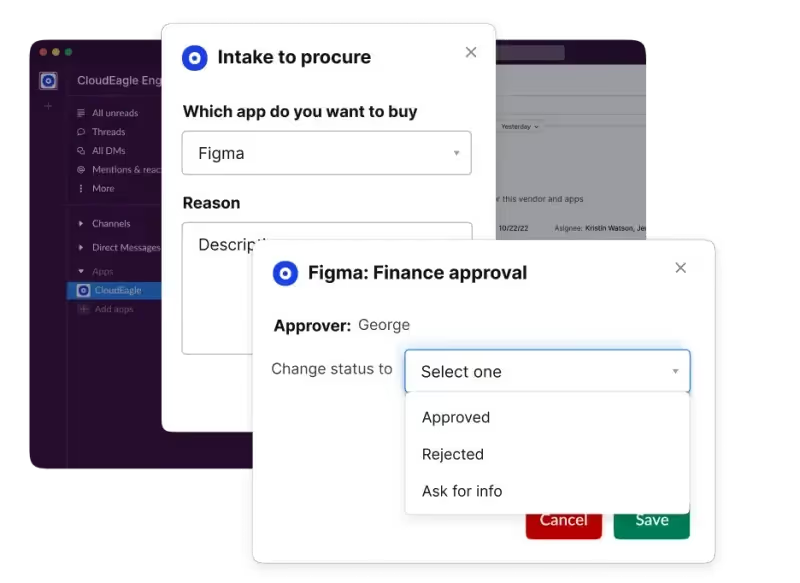
CloudEagle integrates seamlessly with collaboration tools like Slack, allowing businesses to design customized workflows with built-in approvals. Managers can approve requests directly within Slack, speeding up processes and improving productivity.
Intake-to-Procure Automation
CloudEagle automates the entire procurement cycle. From the moment a purchase request is raised, the platform routes it through approvals, vendor evaluations, and budget checks, ensuring compliance and faster turnaround times.
Renewal Automation
Renewal workflows are triggered well before contract expiry, notifying stakeholders and surfacing cost optimization opportunities. CloudEagle eliminates missed renewals and ensures negotiations happen on time.
Slack Workflow Integration
With built-in Slack workflows, employees can raise purchase requests, track approval status, and receive renewal reminders directly within Slack. This reduces back-and-forth emails and improves collaboration between IT, procurement, and finance teams.
Cross-Functional Visibility
Every step of the workflow is tracked and visible, giving stakeholders transparency into approvals, spend, and vendor performance.
Error-Free Execution
By automating repetitive tasks like data entry, vendor checks, and notifications, CloudEagle reduces human errors and speeds up decision-making.
This combination of procurement, renewals, and Slack-driven workflows positions CloudEagle as more than just a SaaS management tool—it becomes a workflow automation engine for modern enterprises.
Conclusion
The debate of RPA vs workflow automation is not about which is better, but rather about how they complement each other. Workflow automation excels at orchestrating structured, multi-step processes across teams, while RPA shines at executing repetitive, task-level actions.
When combined, they create a powerful automation ecosystem that enhances efficiency, reduces costs, and drives digital transformation.
Platforms like CloudEagle further simplify workflow automation by providing ready-to-use features for onboarding, license management, compliance, and approval workflows, making it easier for organizations to embrace automation at scale.
FAQs
1. What is the difference between RPA and process automation?
RPA automates task-level, repetitive actions, while process automation focuses on end-to-end workflows across departments.
2. What is the difference between workflow and automation?
Workflow refers to the sequence of tasks, while automation refers to the technology that executes those tasks without manual intervention.
3. What is robotics and workflow automation?
Robotics refers to RPA bots automating rule-based tasks, while workflow automation streamlines multi-step business processes.
4. What is RPA automation?
RPA automation is the use of software bots to mimic human actions like data entry, copying, and system updates.
5. Which RPA tool is best?
Popular RPA tools include UiPath, Automation Anywhere, and Blue Prism. The best choice depends on your business needs

%201.svg)







.avif)




.avif)
.avif)




.png)
